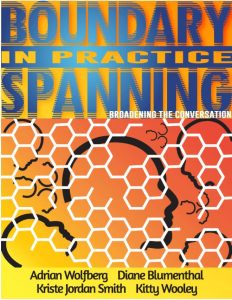Before even discussing the book’s contents, you’ll need to understand what the title is (and isn’t!) about. In fact, you’re not likely to find this book by the usual search terms!
- Despite the terms “emotional” and “underwear”, this is not another in the series of bodice-ripper romances by one Jay S. Wilder.
- “Renting your underwear” comes from a speech saying you will need to do things that make you recoil – such as wearing rented underwear – to achieve significant goals
So let’s get to what it is. It is a business-inspirational book intended to get you to put away all the distracting (and expensive) reasons why you will not take action now to start doing what you know you ought to do. It is a quick read, at 125 pages, although you’ll probably do well to skim first to see what is in it and then come back through to pick up on the detailed advice.
It has two critical messages:
- All that conspicuous spending buys you very little in long-term satisfaction and cost you the capital you need for the things that are really important, whether it is investing in a business, taking the dream trip, etc. Get rid of excess stuff now and stop buying it in the future.
- If your ambitions are to do something other than what you are doing, then doing nothing because it’s just easier that way will not get you any closer to your goal
The book spends a fair amount of time discussing specific actions you can take to stop avoiding what you need to do and to keep yourself focused on the important goals. There are also links to some supporting resources such as workbooks ot help you implement some of the ideas. If you’re sitting around thinking “there has to be more to life than this” or “is this how I am supposed to spend the rest of my life?”, then this is the book for you. It will also help if you’ve already had that thought and have established some vague goals for improving your situation but you’re still wondering why nothing seems to be getting better: the odds are that you’re avoiding the harder steps that are needed to get up on that path.
Even if you’re not having such pangs, reading the book should cause you to at least question whether you have really defined any goals, or whether you are just comfortably drifting along … to where? One thing the book can’t do is to help you define what your goals might be, and that might be the hardest task of all.
The one area where I didn’t go along with the flow of the book is its constant assertions that you do need to make drastic changes. There are many people who are in fact quite fat and happy (not to say dumb, not at all) and will be very content to keep drifting on the path of least resistance. But they’re not likely to be reading a book about how to do anything about it, so the book isn’t meant for them anyway.

![Here's The Deal: Everything You Wish a Lawyer Would Tell You About Buying a Small Business by [Joel Ankney]](https://m.media-amazon.com/images/I/41l6+OnAAWL.jpg)

![The Old Boys by [McCarry, Charles]](https://images-na.ssl-images-amazon.com/images/I/51pjfVZFTDL.jpg) An excellent yarn about a group of former spies getting together for one last caper. The premises are an entertaining homage to several classics in this field – a central character who is declared to be dead but may not be, the mysterious jihadist who has also returned from the dead, and (surprisingly) a long-lost Gospel that could have enormous repercussions. This last item is in fact an enormously intriguing concept but it serves only as the omnipresent McGuffin; I should like to have seen it developed a lot further.
An excellent yarn about a group of former spies getting together for one last caper. The premises are an entertaining homage to several classics in this field – a central character who is declared to be dead but may not be, the mysterious jihadist who has also returned from the dead, and (surprisingly) a long-lost Gospel that could have enormous repercussions. This last item is in fact an enormously intriguing concept but it serves only as the omnipresent McGuffin; I should like to have seen it developed a lot further. This book is an introduction to Kitty Wooley’s “Senior Fellows” initiative to develop and maintain an ongoing network of public servants (loosely defined) who are willing and able to work across organizational and functional lines to improve both public services and the conditions under which they are provided.
This book is an introduction to Kitty Wooley’s “Senior Fellows” initiative to develop and maintain an ongoing network of public servants (loosely defined) who are willing and able to work across organizational and functional lines to improve both public services and the conditions under which they are provided.![The Phoenix Project: A Novel about IT, DevOps, and Helping Your Business Win by [Kim, Gene, Behr, Kevin, Spafford, George]](https://images-na.ssl-images-amazon.com/images/I/51zDZ1s4hCL.jpg)
![Pink Goldfish: Defy Normal, Exploit Imperfection and Captivate Your Customers by [Phelps, Stan, Rendall, David]](https://images-na.ssl-images-amazon.com/images/I/51IG1Lg%2BIKL.jpg) A very easy reading book, packed with real-company examples to prove the points around the idea that you do much better by being very good at what you’re good at than by trying to copy what the most venerated institution is able to afford to do (but usually doesn’t). For a small entity there are plenty enough potential customers to thrive by being great at your core offering and by turning less-effective elements into points of differentiation.
A very easy reading book, packed with real-company examples to prove the points around the idea that you do much better by being very good at what you’re good at than by trying to copy what the most venerated institution is able to afford to do (but usually doesn’t). For a small entity there are plenty enough potential customers to thrive by being great at your core offering and by turning less-effective elements into points of differentiation. A young man – a boy, really – is torn out of his world by forces he cannot understand and compelled to take on an improbable role as the only person who can save this civilization that is far beyond his understanding. The world on which David lands is, like Dune or Tattooine, a strange melding of desert tribes and off-planet advanced aliens, medieval societies armed at the same time with swords and air-scooters, marching robot dinosaur-like combat platforms and hand-to-hand battles with monsters, and of course the suicidal flight between anti-aircraft lasers to an impossibly rock-hard target that may or may not be the real focal point.
A young man – a boy, really – is torn out of his world by forces he cannot understand and compelled to take on an improbable role as the only person who can save this civilization that is far beyond his understanding. The world on which David lands is, like Dune or Tattooine, a strange melding of desert tribes and off-planet advanced aliens, medieval societies armed at the same time with swords and air-scooters, marching robot dinosaur-like combat platforms and hand-to-hand battles with monsters, and of course the suicidal flight between anti-aircraft lasers to an impossibly rock-hard target that may or may not be the real focal point.![The Widows of Malabar Hill (A Perveen Mistry Novel Book 1) by [Massey, Sujata]](https://images-na.ssl-images-amazon.com/images/I/51yfg1VG4yL.jpg) A very engaging tale of a newly-minted attorney in 1920s Bombay (now Mumbai). Purveen Mistry is Bombay’s first and only female attorney, which presents several professional drawbacks, but it has one huge advantage: access to the class of women, often very wealthy, who are walled off from outside society in a harem and allow no contact with any males except their husband. This book is the story of a will-and-trust situation (a complex one, given the three surviving wives) that turns into a murder investigation, for which our heroine is quite unprepared. It also provides interesting insights into the interplay between India’s superficially-tolerant religious factions and the social issues (but also some of the equalizing and stabilizing influences) resulting from the British occupation which had then been going on for over 150 years. The events of the book also provide an introduction to some aspects of the Parsee religion (Zoroastrianism) imported from Persia in the middle ages, although mostly the book addresses only a few of the more dramatic practices rather than a fuller exposition of that very interesting religion. This was read as an audio book, the quality of which was excellent, using several audio voices and tonalities to keep the characters distinct.
A very engaging tale of a newly-minted attorney in 1920s Bombay (now Mumbai). Purveen Mistry is Bombay’s first and only female attorney, which presents several professional drawbacks, but it has one huge advantage: access to the class of women, often very wealthy, who are walled off from outside society in a harem and allow no contact with any males except their husband. This book is the story of a will-and-trust situation (a complex one, given the three surviving wives) that turns into a murder investigation, for which our heroine is quite unprepared. It also provides interesting insights into the interplay between India’s superficially-tolerant religious factions and the social issues (but also some of the equalizing and stabilizing influences) resulting from the British occupation which had then been going on for over 150 years. The events of the book also provide an introduction to some aspects of the Parsee religion (Zoroastrianism) imported from Persia in the middle ages, although mostly the book addresses only a few of the more dramatic practices rather than a fuller exposition of that very interesting religion. This was read as an audio book, the quality of which was excellent, using several audio voices and tonalities to keep the characters distinct. The second of Jack Forsithe’s books is a fast-moving read that combines the genres of thriller and alien-type fantasy. It is an easier story to follow than the first volume, Heart in the Clouds, because the four original separate story-lines have merged into two at the book’s opening and quickly becomes a single plot. Naturally that would be easier to follow, although it is hard for me to assess that since I did read the first volume first, so I had already become familiar with the whole other-creature setup (and their tongue-twister moniker, the Zighorottiz). Although Forsithe does provide enough back story to pick up on the ideas, it would definitely be worth your while to read Heart also (
The second of Jack Forsithe’s books is a fast-moving read that combines the genres of thriller and alien-type fantasy. It is an easier story to follow than the first volume, Heart in the Clouds, because the four original separate story-lines have merged into two at the book’s opening and quickly becomes a single plot. Naturally that would be easier to follow, although it is hard for me to assess that since I did read the first volume first, so I had already become familiar with the whole other-creature setup (and their tongue-twister moniker, the Zighorottiz). Although Forsithe does provide enough back story to pick up on the ideas, it would definitely be worth your while to read Heart also (